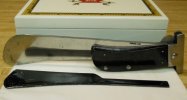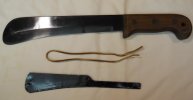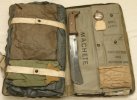Thinking about buying that Navy Kbar here soon, going to pull a joke on the gf. She mentioned she thinks Kbar's are cool (she hates my knife hobby) think I'll pretend to give it to her for our anniversary coming up here  (I have a nice necklace for her)
(I have a nice necklace for her)
Show us some pictures of your machete's! and give us some history!
Don't know much about blade history, but surprised no one has mentioned the Machete, Broad sword, or any Japanese swords.
I am a fan of Machetes, slimline machetes, and brush swords. Just because I use the heck out of them everyday.
Show us some pictures of your machete's! and give us some history!














